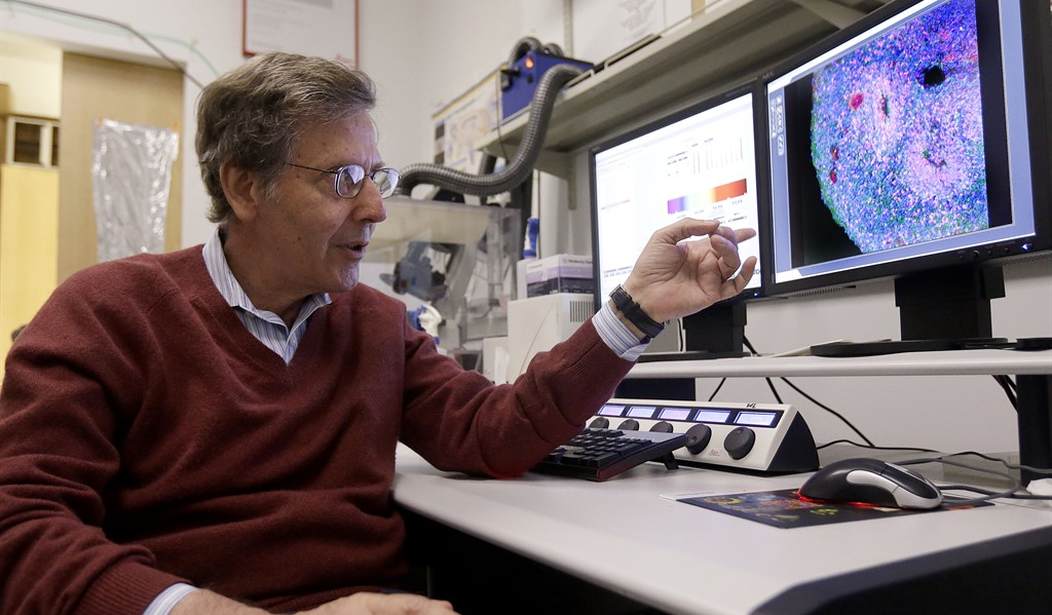If you're as interested in AI and robotics as I am, then one thing you probably concluded is that eventually, things were going to have to get more biological and a little less metal. Even robot joints, as fluid as they've become, don't function as smoothly as muscle and sinew. Moreover, even the most advanced computer chip doesn't have the processing power of the human brain.
Despite what you might think about our fragility and stupidity, human beings are an absolute marvel, so much so that it's hard not to believe there's a creative mind behind it.
But humans, being the children of a grand interdimensional and hyper-advanced mathematical mind, are creators themselves and one thing we have a massive interest in is the creation of life. Compared to God's ultimate creation, the human, even our most advanced AI driven robot looks like a patchwork doll with button eyes compared to an actual baby.
But our need for utilizing biological components in our computational machines was something we figured out long ago, and it's been something that's being worked on even now. This isn't science fiction. This is happening as I write this.
According to Tom's Hardware, human brain organoids are being used as processors and it's already exceeding anything our most advanced processors can do. The Swiss company, FinalSpark, is claiming that its "Neuroplatform," a bioprocessor can “consume a million times less power than traditional digital processors.”
The technology is so new that my spellcheck thinks the word "bioprocessor" is a typo, but the concept is not new at all. This has been a milestone scientists have been trying to get to for a long time, and now we're here according to Tom's Hardware. Moreover, it's blowing away the competition:
FinalSpark says its Neuroplatform is capable of learning and processing information, and due to its low power consumption, it could reduce the environmental impacts of computing. In a recent research paper about its developments, FinalSpakr claims that training a single LLM like GPT-3 required approximately 10GWh – about 6,000 times greater energy consumption than the average European citizen uses in a whole year. Such energy expenditure could be massively cut following the successful deployment of bioprocessors.
How does it work? Stripping away all the tecno-jargon, an organoid is an organ grown in a lab using stem cells. In the case of the bioprocessor, this organ is a brain.
They line up four of these tiny brain-like structures and connect them with eight electrodes to stimulate them and record their processing data. Info moves through a converter that takes that data and turns it into something you can understand. The system also includes a life support system as well as monitoring cameras.
These organoids have the power to learn and adapt in very similar ways to fully developed human brains while using far less power than our current tech. The potential for what it can accomplish is pretty mind-blowing, including but not limited to helping with medical diagnosis, stock market forecasting, cybersecurity and...autonomous machines.
For those who aren't picking up what I'm putting down, I'm referring to the creation of real-life androids.
Your jaw should either be clenched or on the floor at this point because this is both amazing and horrifying. The fact that this machine needs a life support system is enough to make some people want to take the issue to congress.
By the way, if you'd like to start using this technology now...you can. It costs $500 a month.
If you want a further breakdown as to how this technology can be somewhat horrifying, watch this video below.
@bearbaitofficial #organoids #brainorganoid #sciencenews #tinybrain #greenscreen ♬ Creepy and beautiful piano background music(918069) - TrickSTAR MUSIC
The question is...are these organoids sentient?
No...not yet, and that's why we need to start having ethical conversations about this technology.
Again, this was always going to be where we went with this technology. Even science fiction writers saw that one coming. The question is how far we go with it, and where we need to stop. Right now, the organoids can only live 100 days due to being unviable outside a human body. This is naturally not stopping scientists from trying to extent that lifespan in various ways and I have no doubt that they will succeed in a few years.
And then what? What will we have wrought? What will it be able to do? How deeply will it be able to think? Will it be able to perceive the world or, horrifically, itself?
These are questions for the future, but questions for the future like this one should have answers before we get there. I shudder to think what we might create that would effectively become a horrifying experiment in playing God. That we could create a slave that lives and dies inside a machine is sci-fi horror but that seems to be where we're headed. We need to consider this deeper and as AI becomes central to our society, which it will, we need to know where to draw lines in order to stop ourselves from crossing a line.
I'm reminded of that famous scene in Jurassic Park here.














